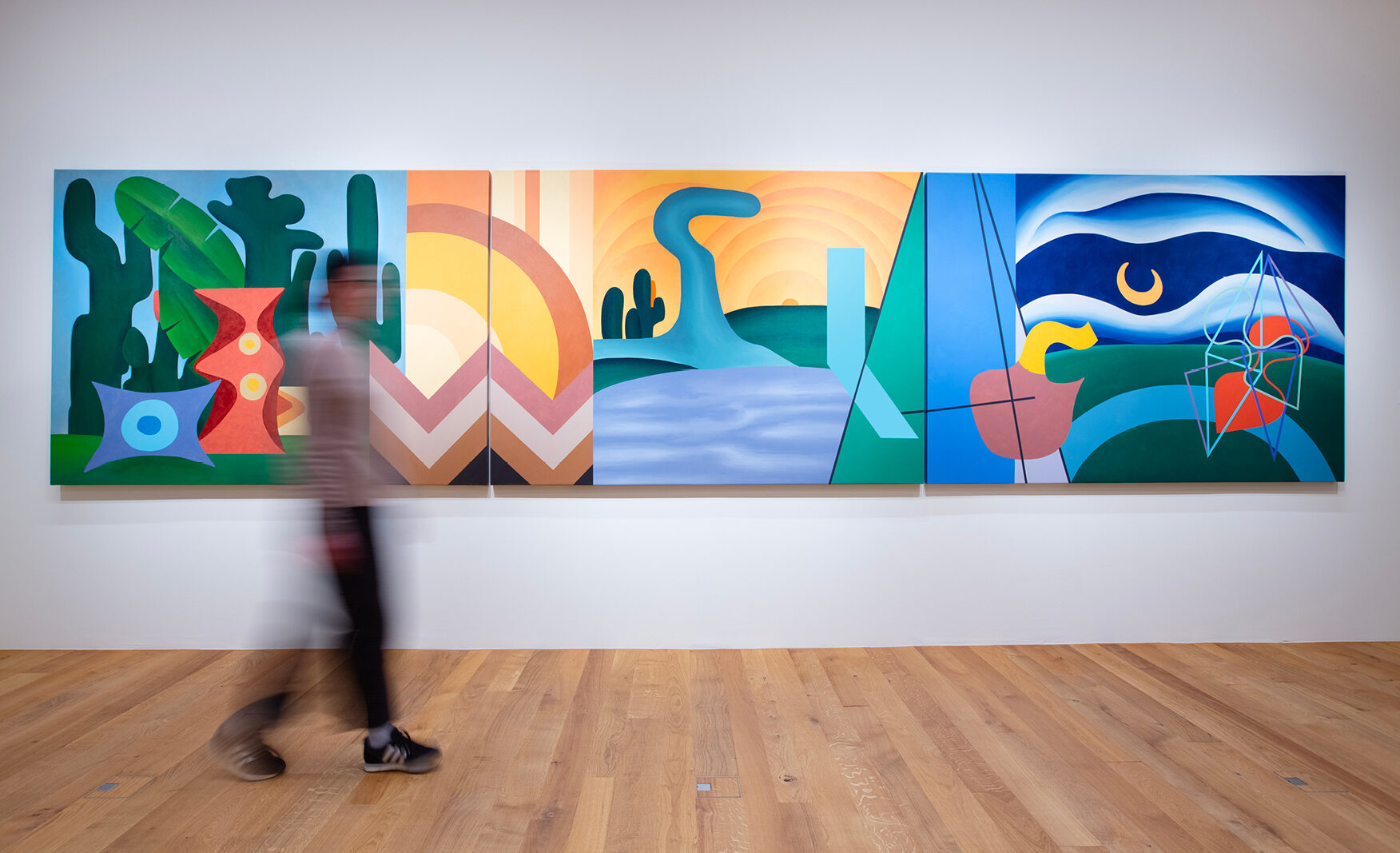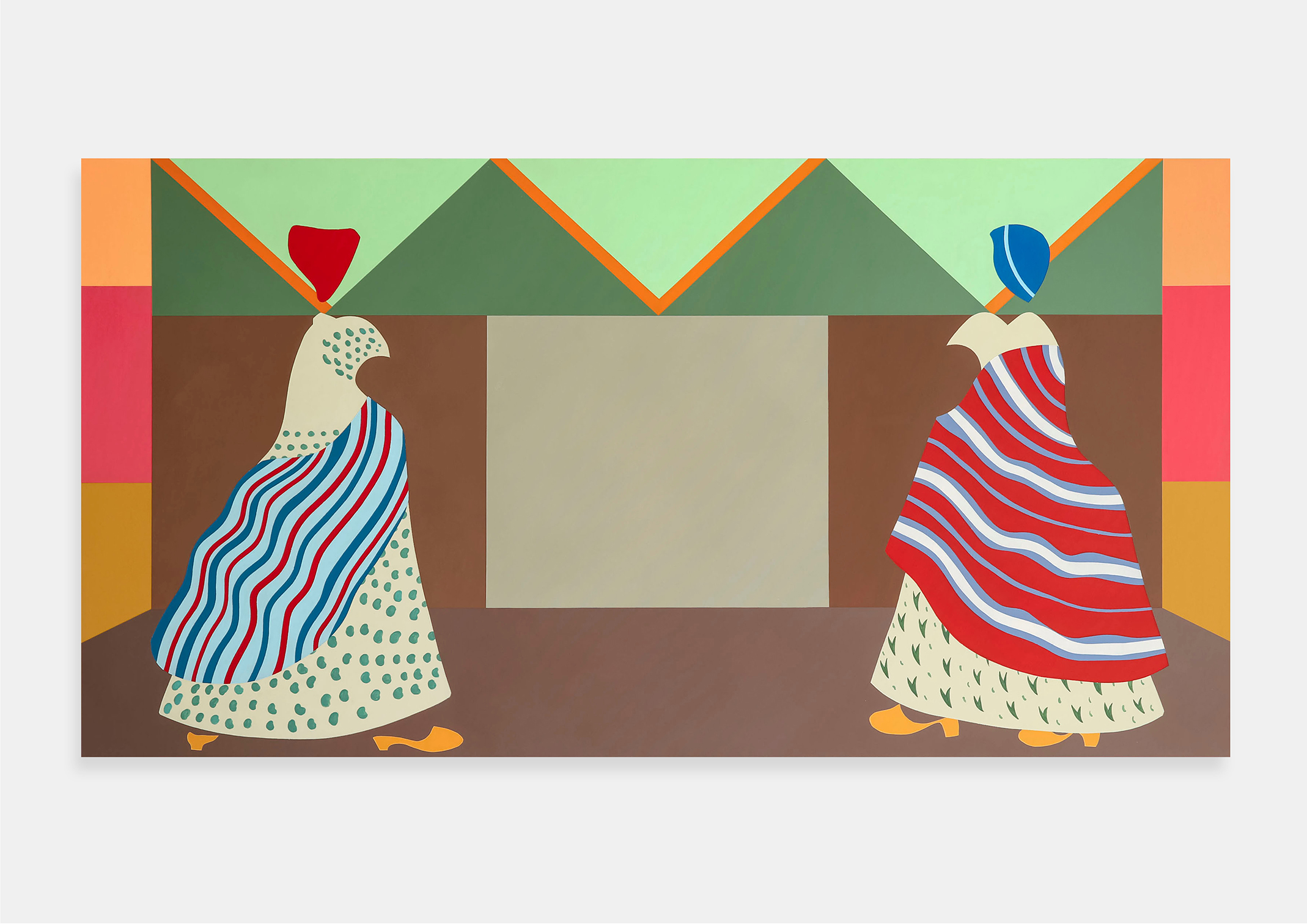Land of the future – The exile of the Orixás 2021 – Acrylic on canvas – 52 x 100 cm
Djanira da Motta e Silva (b. 1914) was an African-Brazilian painter. She is known for paintings that depict Brazilian people, religious themes and landscapes. One of her paintings – entitled Orixás from the 1960s, was exhibited for decades in the spotlight at the Planalto Palace, the workplace of Brazil’s President Jair Bolsonaro.
The painting represented African-rooted religions, such as Umbanda and Candomblé, which are at the origins of the formation of Brazilian people since slavery.
Acts of discrimination, intolerance, violence and religious racism are no strangers to Bolsonaro. After taking office, he removed the painting from the hall. He has no plans to show it to the public again.
Land of the future
The book Brazil, Land of the future, published in 1941 by the Austrian author Stefan Zweig, is a travel guide. The work describes Brazil as an idyllic place with extraordinary civilizing potential.
Despite its sales success, the book was devious as the country was currently under a dictatorship. Nevertheless, Brazil, Land of the future became a national epithet. It was as a slogan widely explored by the government at the time. The new international aesthetics would conveniently match the government’s desire to promote the country’s progress and modernization.
A characteristic of the history of Brazilian culture in the 20th century is the appropriation of Modern avant-gardes by artists and the consequent consolidation of Modernist Brazilianness as one of the foundations of national identity.
With the series Land of the future, I aim to contrast the Modern project in Brazil – its promises of the future and its relationship with politics – with the present context.

